
Where We Be
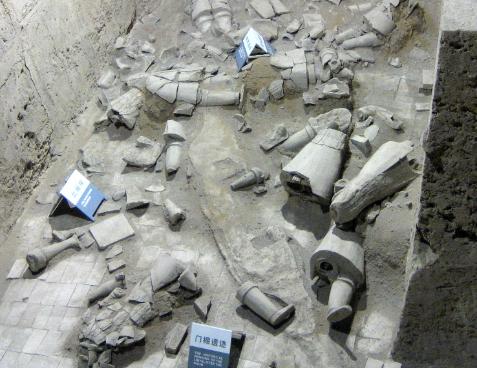
| Each warrior's face is individual, suggesting each statue was modeled after an actual person. On the right-hand side of Pit #1 you can see the warriors at eye level, which lets you appreciate their individual features. |
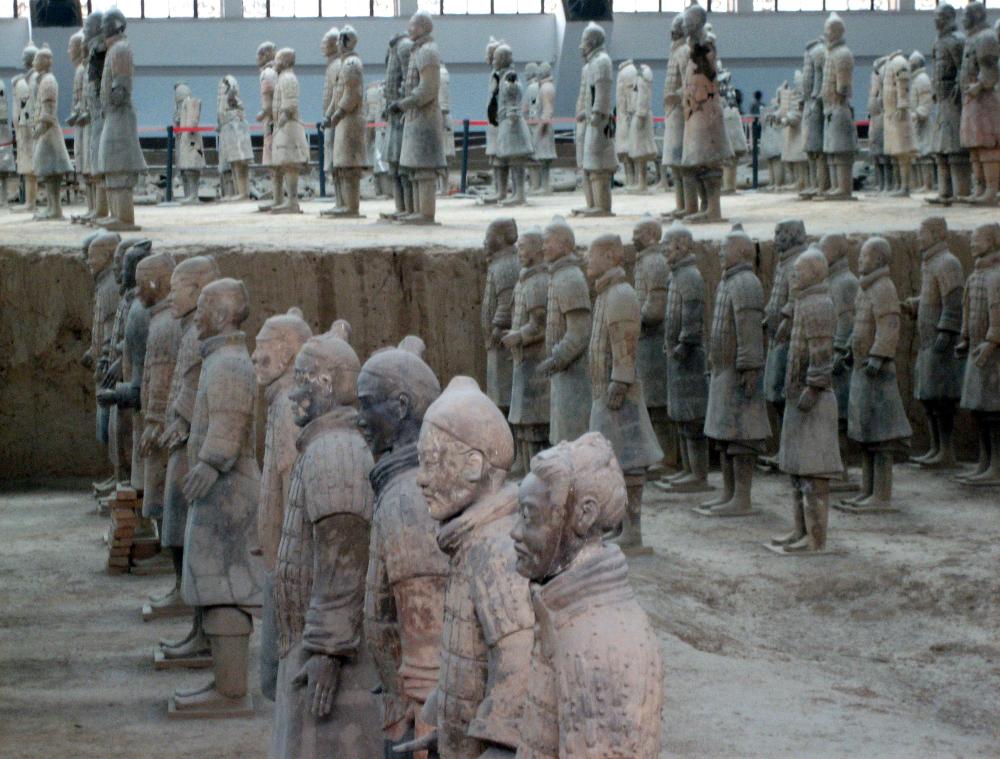
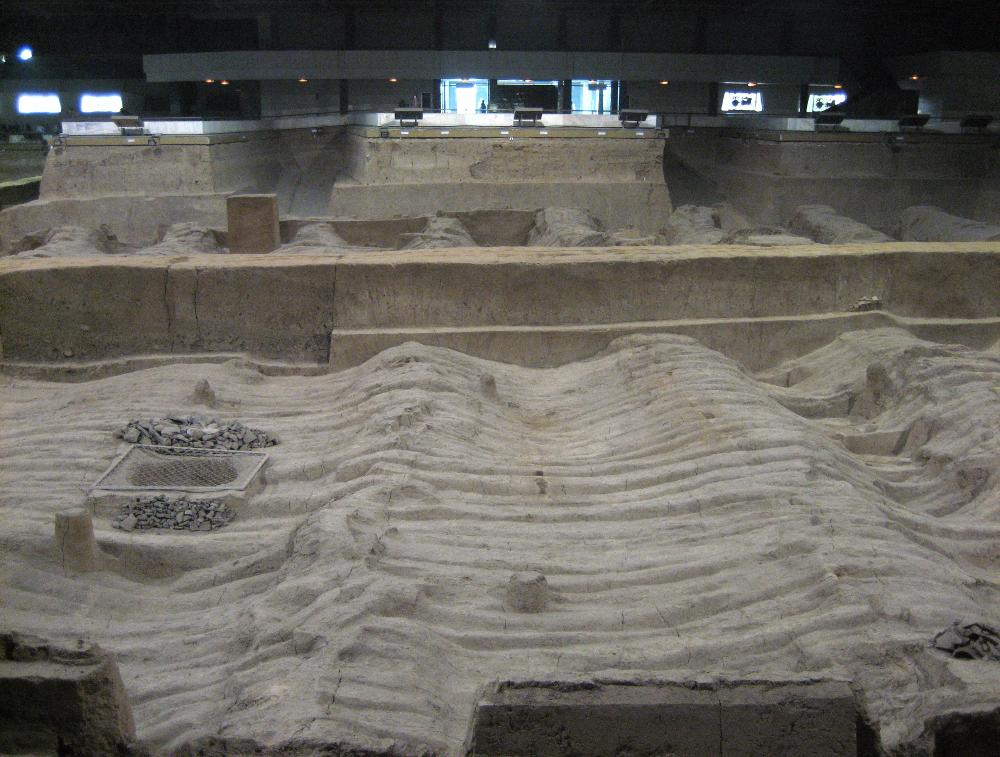
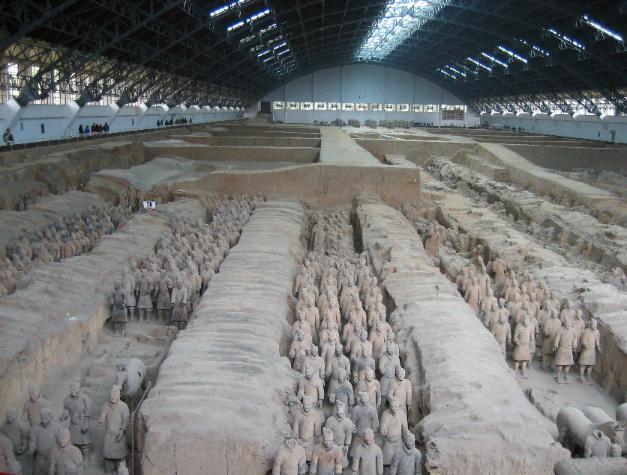
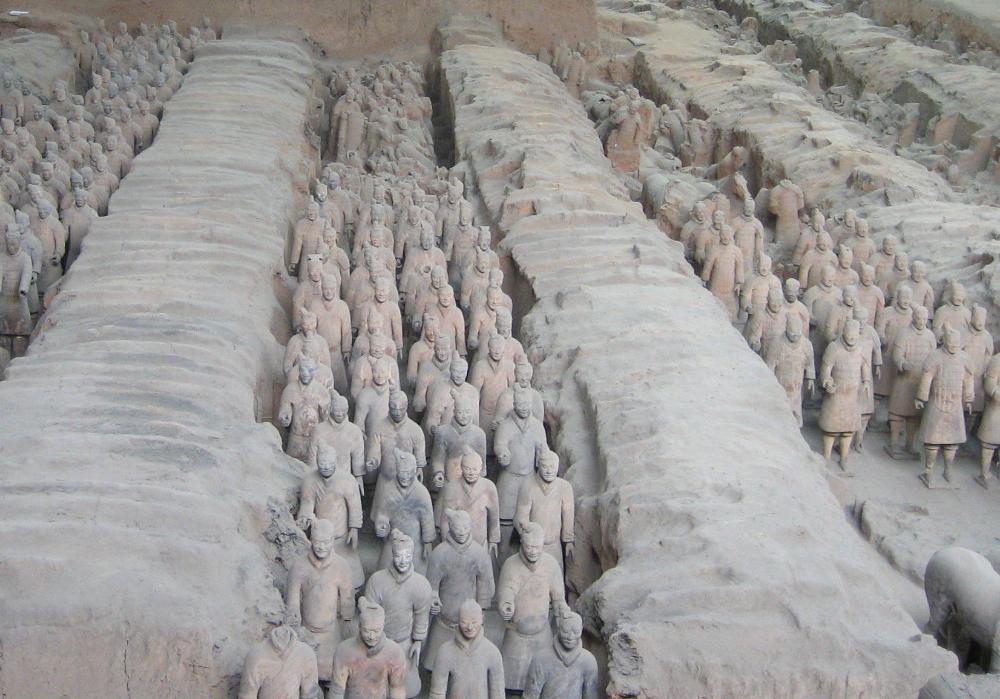
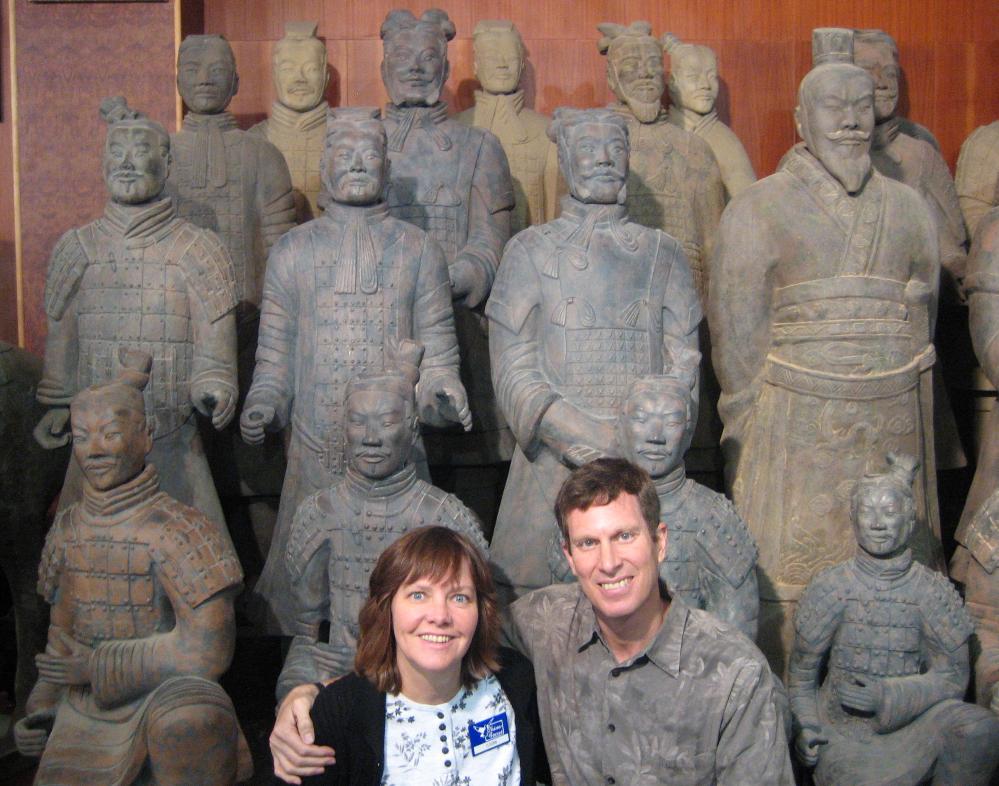
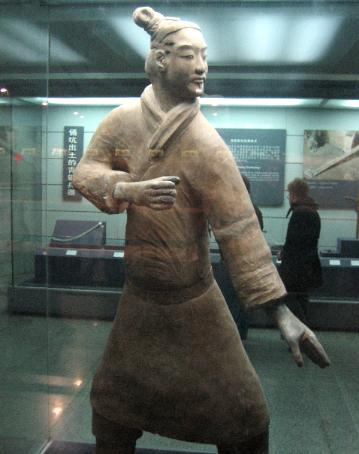
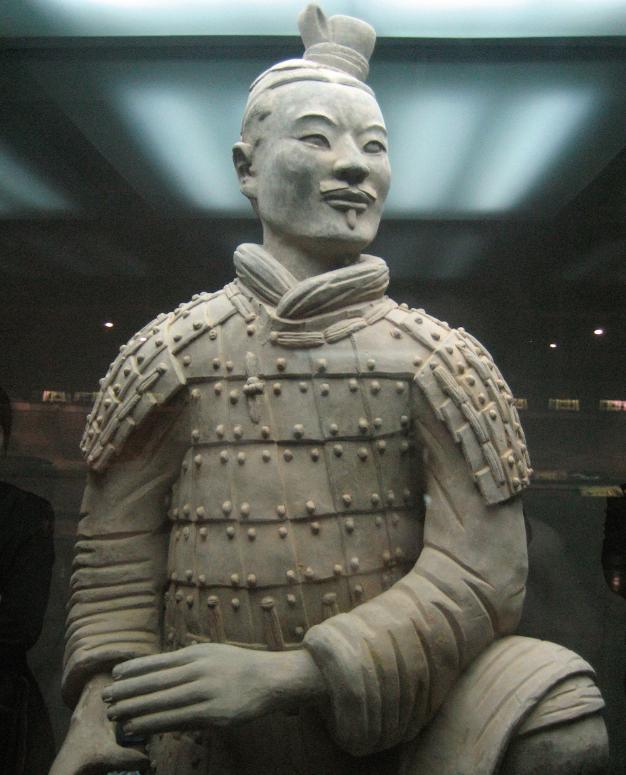
| This kneeling archer still has red paint on the back of his clothes. Imagine how wonderful it would be if the bright colors originally painted on these terracotta warriors remained intact. |
| Terracotta Warriors -- Xi'an, China |
The 2,200-year-old terracotta warriors were
discovered by accident in 1974 by farmers
digging a well. The museum has been built in
situ -- on top of the actual discovery site, and
with the warriors located right where they were
found. You can see the actual well that was dug
and meet the farmer who made the discovery:
he signs books in the gift shop now!
Pit #1 is the largest -- it’s like standing inside an
enormous airport hangar. It contains 6,000 life-
size terracotta warriors and horses in battle
formation. All of the soldiers and horses face
east. Our guide explains that the First Emperor
of China, Qin Shi Huangdi, believed the
greatest threat to his realm came from the east,
where he had conquered most of his enemies.
When you see the rank upon rank of warriors,
then realize that each warrior’s face is uniquely
individual, you can’t help but be impressed.
Many of the bronze weapons the soldiers once
carried are missing now -- taken during a
farmers’ revolt which ended the Qin Dynasty
shortly after the First Emperor’s death. Those
weapons that remain are still surprisingly sharp.
The terracotta warriors were originally painted
in bright colors, but the paint oxidized away
over the centuries (or upon excavation). All you
see now is traces of paint on a few terracotta
warriors kept behind airtight glass. It is for this
reason that the Emperor’s tomb itself has not
been excavated. We didn't realize this until we
visited the site ourselves, but the terracotta
warriors aren’t in the Emperor’s tomb. Rather,
they are in the vanguard of his tomb located a
mile to the west. You can see the burial mound
where Qin's tomb is located, but it remains off
limits even to archaeologists until a technology
is approved by the Chinese government that
allows discoveries to be excavated without
causing oxidation damage. Who knows what
wonders they'll find once they're finally allowed
to excavate that tomb.
discovered by accident in 1974 by farmers
digging a well. The museum has been built in
situ -- on top of the actual discovery site, and
with the warriors located right where they were
found. You can see the actual well that was dug
and meet the farmer who made the discovery:
he signs books in the gift shop now!
Pit #1 is the largest -- it’s like standing inside an
enormous airport hangar. It contains 6,000 life-
size terracotta warriors and horses in battle
formation. All of the soldiers and horses face
east. Our guide explains that the First Emperor
of China, Qin Shi Huangdi, believed the
greatest threat to his realm came from the east,
where he had conquered most of his enemies.
When you see the rank upon rank of warriors,
then realize that each warrior’s face is uniquely
individual, you can’t help but be impressed.
Many of the bronze weapons the soldiers once
carried are missing now -- taken during a
farmers’ revolt which ended the Qin Dynasty
shortly after the First Emperor’s death. Those
weapons that remain are still surprisingly sharp.
The terracotta warriors were originally painted
in bright colors, but the paint oxidized away
over the centuries (or upon excavation). All you
see now is traces of paint on a few terracotta
warriors kept behind airtight glass. It is for this
reason that the Emperor’s tomb itself has not
been excavated. We didn't realize this until we
visited the site ourselves, but the terracotta
warriors aren’t in the Emperor’s tomb. Rather,
they are in the vanguard of his tomb located a
mile to the west. You can see the burial mound
where Qin's tomb is located, but it remains off
limits even to archaeologists until a technology
is approved by the Chinese government that
allows discoveries to be excavated without
causing oxidation damage. Who knows what
wonders they'll find once they're finally allowed
to excavate that tomb.
| The Emperor's army faces east towards his conquered enemies. Emperor Qin's actual tomb is located about a mile west and remains unexcavated. |
| This half-size scale model of a bronze chariot excavated near Qin's mausoleum is “for the Emperor’s eternal use.” It is quite beautiful and faithfully copied down to the last detail, complete with a team of four horses, a driver, and a shade umbrella. |
| Much of Pit #2 remains unexcavated, so what you see is mounds of hard-packed earth covering over where the terracotta warriors still lie |
| This soldier is protected inside an airtight case. Our guide tells of a nearby tomb where precious scrolls and silks disintegrated before archaeologists' eyes before they could even be photographed. |
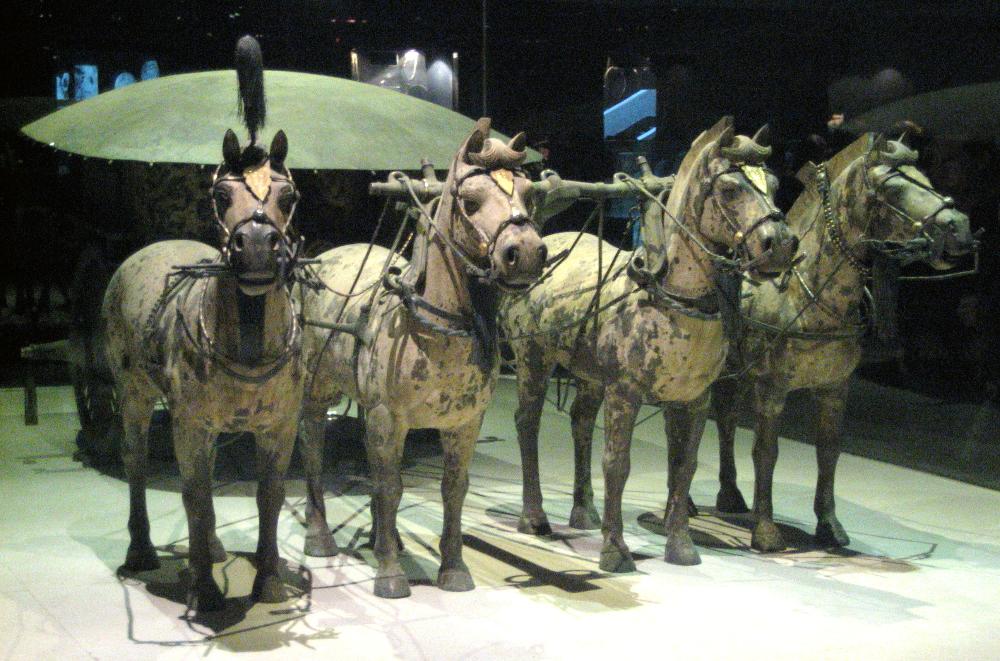
| Pit #1 contains 6,000 life-size terracotta warriors excavated in situ and protected by this enormous hangar. A catwalk encircles the entire hangar. |
| Bus Chat #5: How China Got Its Name |
As we go to see the Terracotta Warriors, our
guide gives us the lowdown on China's First
Emperor, Qin Shi Huangdi, who ordered their
creation. You get a sense of Qin's importance
when you realize that his name (pronounced
“Chin”) is the likely origin of the word “China.”
Emperor for only 22 years (221-206 BC), Qin was
undoubtedly a tyrant, but he also united China
for the first time, began building the Great Wall,
and left a wondrous army of terracotta warriors
behind. It took a lot of bloodshed to unite China
into one realm, and Qin was not shy about
bloodshed. He rewarded his troops for enemy
kills. Three enemy heads was enough to move
up to a higher rank. Five enemy heads meant a
warrior’s father could be freed from slavery.
The battle formations and tactics he and his
military advisors introduced made his troops
invincible. Arrows three feet long have been
discovered which archers shot into the mud-
brick walls surrounding fortresses so that
warriors could climb up them like steps to gain
access. Clever approaches like this enabled
Qin Shi Huangdi to conquer all his enemies and
unite China for the first time.
guide gives us the lowdown on China's First
Emperor, Qin Shi Huangdi, who ordered their
creation. You get a sense of Qin's importance
when you realize that his name (pronounced
“Chin”) is the likely origin of the word “China.”
Emperor for only 22 years (221-206 BC), Qin was
undoubtedly a tyrant, but he also united China
for the first time, began building the Great Wall,
and left a wondrous army of terracotta warriors
behind. It took a lot of bloodshed to unite China
into one realm, and Qin was not shy about
bloodshed. He rewarded his troops for enemy
kills. Three enemy heads was enough to move
up to a higher rank. Five enemy heads meant a
warrior’s father could be freed from slavery.
The battle formations and tactics he and his
military advisors introduced made his troops
invincible. Arrows three feet long have been
discovered which archers shot into the mud-
brick walls surrounding fortresses so that
warriors could climb up them like steps to gain
access. Clever approaches like this enabled
Qin Shi Huangdi to conquer all his enemies and
unite China for the first time.
| If you want your very own replica of a life-sized terracotta warrior, you can purchase one here in the gift shop |
| Pit #3 is much smaller and is believed to be a command post for higher-ranking officers. The remains of a war chariot are shown left. Many terracotta warriors and horses in Pit #3 remain broken in pieces where they were found, as shown at right. |
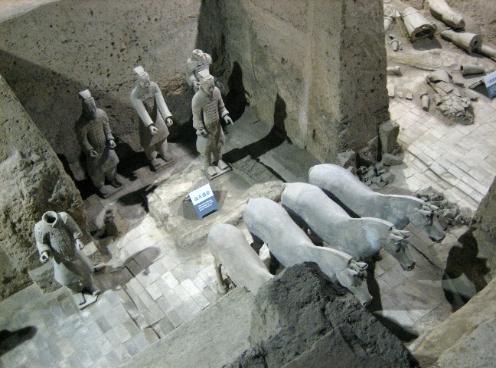
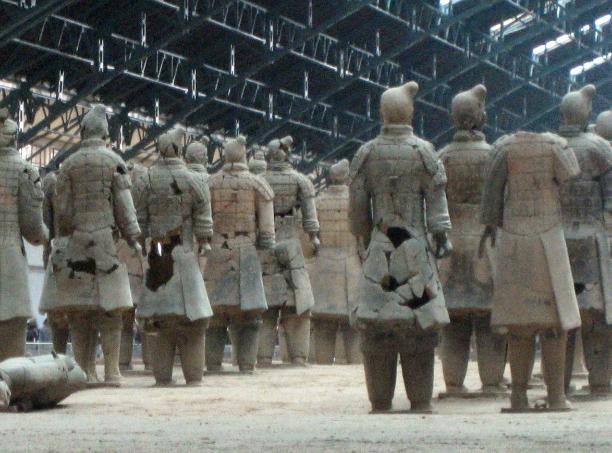
| The peasants revolted shortly after Emperor Qin's death. They ransacked these chambers, set them afire, and smashed many of the terracotta warriors to bits. This reconstruction area towards the back of Pit #1 contains incomplete warriors and horses standing in rows, missing pieces here and there like unfinished 3D jigsaw puzzles. |